Thickening Flat 3D Profiles |
  
|
Any flat profile representation can be changed by applying a Thickness.
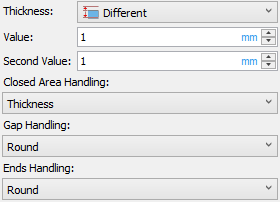
Upon applying a thickness, the contour lines of the profile are offset. The new, thickened, contour is constructed based on these lines. The contour geometry change can be seen by the solid body resulting from it.
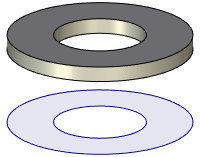
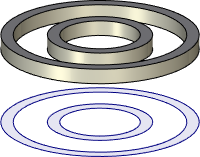
When creating a 3D profile based on intersecting or bifurcating 2D elements, the use of this mode may become the only possible way of constructing the profile. If thickness was not defined by the user, the system asks to apply it upon confirming the creation of such profile.
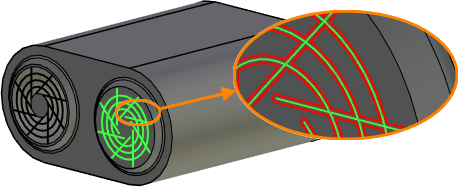
Thickness types
In theory, the way of constructing offset lines is defined by the thickness type. Following types are available in the Thickness drop-down list:
•![]() No
No
Thickness is not applied.
•![]() Outside
Outside
![]() Inside
Inside
Offset lines are constructed on one side of the original contour lines. Offset Value can be set in the eponymous input box. For closed contours, the direction of offsetting in relation to original lines is defined by the selected mode (outside or inside the original contour); the offsetting direction for open contours is automatically selected by the system.
•![]() Symmetric
Symmetric
Offset lines are constructed on both sides of the original contour lines at distances equal to the offset Value.
•![]() Symmetric - Total Width
Symmetric - Total Width
Offset lines are constructed on both sides of the original contour lines at distances equal to half of the offset Value.
•![]() Different
Different
•Offset lines are constructed on both sides of the original contour lines at different distances. Offset Value is applied outside, Second Value - inside.
In real life, however, the shape of offset lines is determined, besides the thickening type, by the shape of the original contour. It depends on the presence in the original contour of self-intersections or forks (bifurcations), as well as closed areas. For example, a contour with self-intersections or forks in most cases can't be thickened on two sides by different offset distances. Use of Outward or Inward options is not allowed for such contours either. The result of applying to it the Double sided option will also depend on the presence of closed areas in the contour. If there aren't such areas in the original profile contour, using this option will result in the same shape as the Symmetric option, that is, the same offset distance will be maintained on either side of the original contour lines (the second offset distance being ignored). If the contour with self-intersections or forks contains closed areas, then the inward offsets (the ones created in closed loops) use one of the distances, while the outward ones (all the rest) use the other offset distance.

If 3D profile contains closed contours, one of following options can be applied to them:
•Close area - closed contours remain the same after applying the thickness.
•Thickness - closed contours are replaced by equidistant contours.


When creating an offset, three ways of handling gaps between the offset lines are possible:
•Round – rounds are constructed between the ends of the neighboring lines of the resulting contour.
•By Line – the gaps are closed by straight lines tangent to the offset lines at their ends.
•By Curve – the curves that make the original contour are continued by the same law. Straight lines are continued straight, arcs - round.
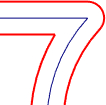
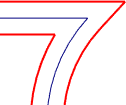
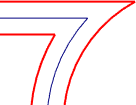
When thickening an open contour, the offsets from the hanging ends of lines can be joined in one of following ways:
•Round – ends of offset lines are joined by circular arcs.
•By line – ends of offset lines are joined by straight lines.
![]()
![]()